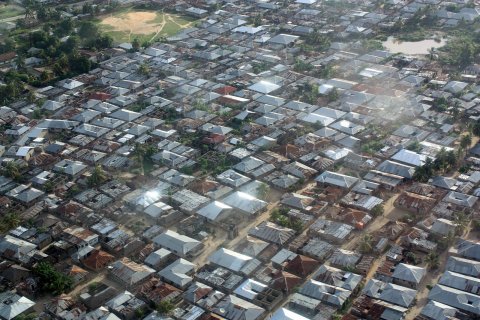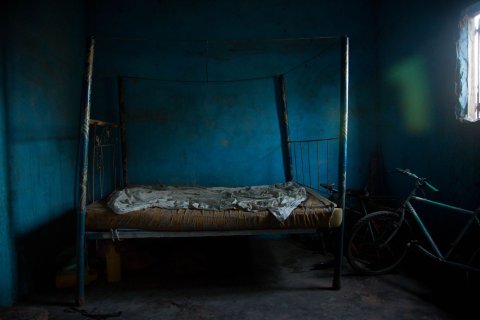Housing and health: can we build vector-borne disease out of Africa?

On World Malaria Day, the spotlight shines firmly on the global response to malaria, which remains one of the world’s biggest killers.
Progress in the fight against malaria has stalled
After more than a decade of steady advances in tackling the disease, progress has stalled. According to the World Health Organization, no major gains were made in reducing malaria cases in the period between 2015 and 2017. And the estimated number of malaria deaths in 2017, at 435,000, remained virtually unchanged from the previous year.
Malaria is not the only vector-borne disease to pose a concern. Globally the risk of Aedes-borne arboviruses is growing rapidly, with the unprecedented spread of dengue and chikungunya viruses, outbreaks of yellow fever and the global epidemic of Zika virus in 2015.
Vector-borne diseases threaten 80% of the world’s population
Collectively, vector-borne diseases threaten over 80% of the world’s population. Since malaria is largely a rural disease and Aedes-borne infections are typically focused in urban areas, these diseases threaten the health of all citizens of Africa, as well as imposing a major economic burden on some of the poorest countries in the world.
To tackle these diseases, we must continue to deploy interventions that work. These include insecticide-treated bed nets, house spraying and effective diagnosis and treatment – which averted 663 million cases of malaria in Africa between 2000 and 2015. Bed nets alone contributed 68% of this achievement.
But we also need to complement traditional tools with a more sustainable approach that acknowledges the role of environmental and social factors in health.

Protecting the home from vectors
Improving the built environment is a promising strategy to reduce vector-borne disease. House screening – including well-fitting doors and large screened windows to block mosquito entry while keeping the home cool – can help lower the risk of malaria and Aedes-mosquito borne diseases such as dengue, for which the home is often a place of high transmission risk.
Over 80% of malaria transmission by the night-biting mosquito Anopheles gambiae can occur indoors, whereas transmission of Aedes-borne viruses by the day-biting Aedes aegypti is focused around homes, schools and workplaces where the aquatic habitats of this mosquito abound.
Urban environments can also be defended against Aedes mosquitoes through better environmental management and urban planning. Towns and cities typically provide the ideal habitat for Aedes aegypti, which flourishes in small bodies of water found in discarded plastic containers, plant pots, gutters and old tyres. Insecure water supplies encourage people to store water in their homes, which also breeds Aedes.
Economic development presents an opportunity
Rapid economic and population growth in sub-Saharan Africa presents a remarkable opportunity to create healthier environments.
The continent’s population is projected to increase from 1.2 billion in 2015 to 2.1 billion in 2050 and it has the world’s fastest rate of urbanisation. Accommodating this growth – while working towards Sustainable Development Goal 11 and the New Urban Agenda to ensure adequate housing for all by 2030 and safe, resilient human settlements – will require careful planning and hundreds of millions of new homes.
Alongside economic growth, Africa’s existing housing stock is transforming. New research published in Nature reveals that the prevalence of housing with improved drinking water and sanitation, sufficient living area and durable construction has doubled from 11% in 2000 to 23% in 2015. This housing revolution is an exceptional opportunity to improve human wellbeing.
Bridging the gap between epidemiologists and urban planners
This window may be missed, however, without a coordinated effort. Health experts and epidemiologists remain largely divorced from architects, urban planners and industry in endemic countries; essentially there is a lack of inter-sectoral links.
Both the Roll Back Malaria Partnership and the BOVA network are trying to bridge the gap. In April 2019, experts in housing and health convened at the UN-Habitat headquarters in Nairobi, with the aim of working more closely together.
Tackling vector-borne disease through the built environment
Tackling vector-borne disease through the built environment is an aspiration that aligns with the World Health Organization’s Global Vector Control Response, the global manifesto to reduce mortality due to vector-borne diseases globally relative to 2016 by at least 75% by 2030.
At the core of this strategy is collaboration across sectors, including the environment, urban planning, and education – as well as the use of interventions outside the traditional health sphere, such as house screening.
If nothing is done, then the risk of future outbreaks is huge, and vector-borne diseases will continue to impose a crippling burden on the poorest people worldwide.
